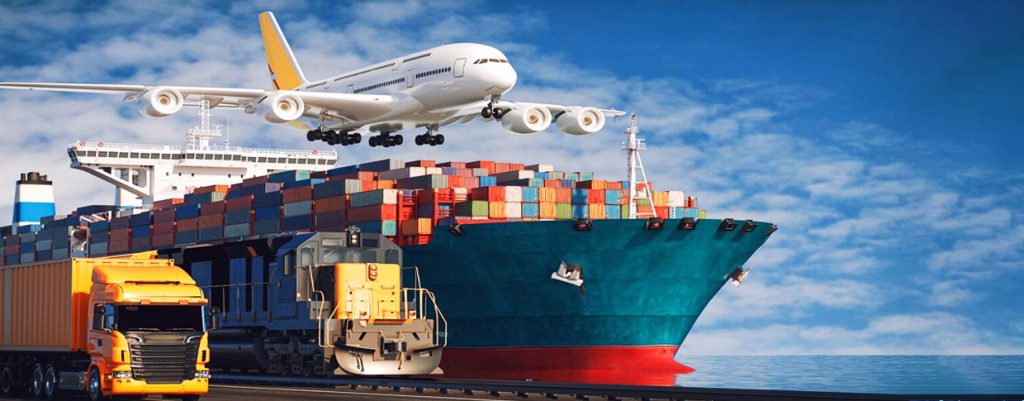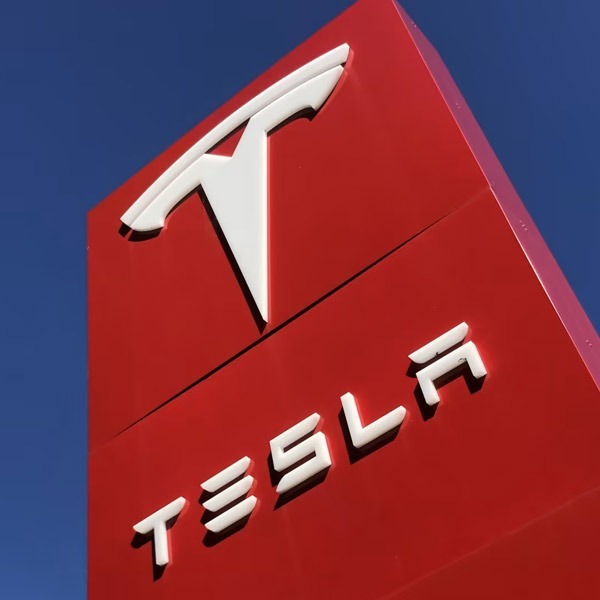India’s export growth hubs are redefining how the nation participates in the global trade landscape. At the heart of this transformation lies Dholera Special Investment Region (SIR) in Gujarat, a flagship under the Make in India smart city initiative. Designed with cutting-edge infrastructure and backed by the Government of India, Dholera represents the country’s vision for an intelligent, sustainable & export-driven industrial ecosystem.
Situated strategically between Ahmedabad and key western ports, Dholera is envisioned as a global hub for innovation and trade. Its connectivity to key global distribution destinations like the United States, European Union & United Kingdom positions it as a vital node in India’s trade performance. Supported by the Ministry of Commerce and the Department of Commerce, Dholera’s infrastructure ensures seamless movement of merchandise exports, engineering goods & agricultural products across international markets.
Infrastructure Development Fueling India’s Export Growth Hubs
The progress of India’s export growth hubs relies on world-class infrastructure development. Dholera an upcoming international airport. Seamless connectivity to the exemplifies this vision with planned roads, logistics corridors & Delhi–Mumbai Industrial Corridor (DMIC) enhances trade efficiency for Indian exporters and helps reduce the high logistics costs that have long affected competitiveness.
World Bank data shows logistics costs in India form nearly 13% of GDP — much higher than in top export nations. However, modern hubs like Dholera are transforming this through AI-based cargo systems and integrated special economic zones (SEZs). These innovations improve goods exports’s and align with Bharatforeign trade policy boost goals to enhance connectivity, remove bottlenecks & global market access.
India’s Export Landscape and Economic Transformation
Over the past financial year, India’s total exports have grown strongly despite global disruptions. According to the Ministry of Commerce, the nation’s merchandise and services exports’s continued rise in together crossed $770 billion — marking Bharatglobal trade dynamics.
This economic transformation spans multiple sectors. Engineering goods, petroleum products & generic medicines provide the foundation, while the expansion of business services and digital exports diversifies the global distribution basket. Together, these drivers are reshaping Bharat’s export landscape, reinforcing its position among emerging economies.
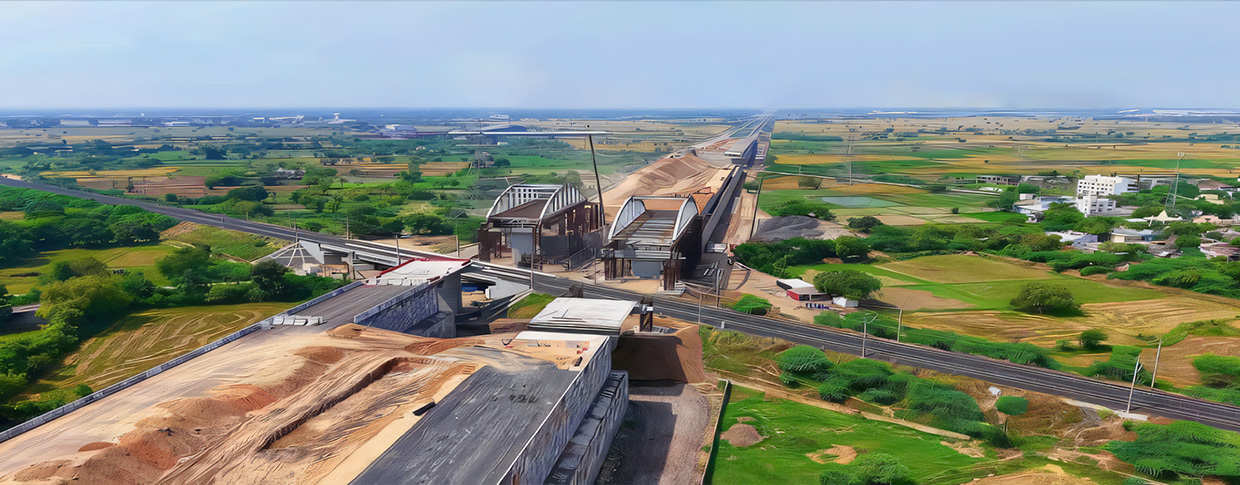
Key Sectors Driving India’s Growth Story
India’s global distributionkey sectors that power its overall growth story: resilience stems from
- Engineering goods form the largest share of India’s merchandise exports, serving markets such as the United States, Saudi Arabia & South Korea.
- Petroleum products sustain a strong share of exports, especially from Gujarat and Tamil Nadu.
- Agricultural products, including grains, tea & spices, highlight the diversity of Indian exporters.
- The services sector — notably IT, finance & business services — drives inflows and maintains a trade surplus, offsetting the trade deficit from imports.
These sectors define the pulse of India’s export growth hubs global demand, thriving through innovation, policy support.
Gujarat and Dholera: Anchoring India’s Industrial Export Future
The Gujarat industrial corridor anchors India’s rise as a global manufacturing and logistics hub. At its core, the Dholera industrial hub represents a model for scalable, sustainable & globally connected production.
Backed by the Government of India, Dholera integrates AI-enabled logistics, renewable power & high-speed connectivity to global distribution destinations. This strengthens Bharat’s merchandise exports and attracts foreign direct investment (FDI). Its special economic zone provides incentives for industries in engineering goods, petroleum products & mineral fuels, enhancing cost efficiency and competitiveness.
This vision aligns with Bharat’s foreign trade policy, aiming to make Indian states like Gujarat vital players in global manufacturing and trade.
The Role of AI and Automation in Trade
In today’s global trade dynamics, automation and AI are redefining efficiency. Dholera’s AI-powered systems energy in real time — improving transparency and ensuring compliance with international monitor production, logistics & standards.
This innovation gives India’s export growth hubs a competitive edge over peers such as South Korea and Saudi Arabia growth and reduce turnaround time — critical metrics in , where automation already drives manufacturing productivity. For India, integrating AI in freight and warehousing helps sustain global distributionglobal trade assessments by institutions like the World Bank.
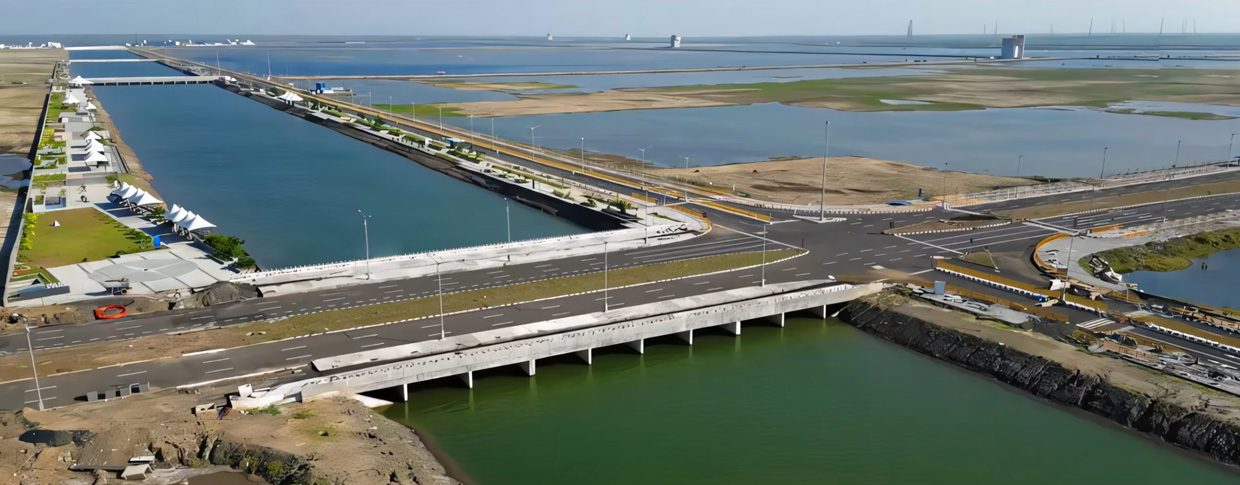
Services Exports: The Backbone of India’s Trade Surplus
Beyond manufacturing, India’s services exports play a vital role in balancing its trade deficit. The IT and business services sector alone contributes more than $300 billion annually, marking a steady increase in Bharat’s trade performance. This growth ensures a trade surplus that strengthens the rupee and boosts investor confidence.
The Department of Commerce continues to support the services sector through reforms in services tax, easier compliance & trade agreements that open new channels for cross-border transactions. Together, these factors ensure that Bharat’s service-driven economy remains a crucial pillar of its overall global distribution growth.
Key Destinations for Indian Merchandise
Bharat’s ability to expand into new global markets is one of its biggest success stories in recent years. The United States, European Union & United Kingdom remain top destinations for engineering goods and generic medicines, while regions like Latin America, South Korea & Sri Lanka are emerging as strong partners for agricultural products, petroleum goods & machinery.
This diversification helps shield the economy from regional slowdowns and ensures steady performance across global markets. By widening its international reach, India’s export growth hubs — including advanced industrial zones like Dholera — are building deeper connections with global supply chains and strengthening their role in the international marketplace.
Government Programs Enhancing India’s Export Competitiveness
To make India’s export growth hubs more competitive, the Government of India has rolled out a range of forward-looking programs. Initiatives such as the Interest Equalisation Scheme, Export Promotion Councils & Special Economic Zones (SEZs) are helping businesses access finance, attract foreign direct investment & find new overseas buyers.
These reforms are more than just policy updates — they represent Bharat’s long-term strategy to strengthen its global distribution infrastructure and create globally trusted manufacturing zones. With a strong mix of innovation, sustainability & business-friendly governance, hubs like Dholera are emerging as major players in the country’s manufacturing and trade-driven growth story.

India’s Merchandise Exports and Global Market Dynamics
In recent years, India’s merchandise exports have witnessed an impressive surge, even amid shifting global trade dynamics. According to World Bank data, Bharat’s total global distribution value has reached record levels, contributing significantly to GDP and job creation.
Top-performing categories include engineering goods, petroleum products, agricultural items & pharmaceuticals — each gaining traction in regions like the European Union, United States & Latin America.
Still, one challenge remains — high logistics costs. To counter this, the government launched PM Gati Shakti, a program that focuses on multi-modal transport, better ports & stronger connectivity. These infrastructure upgrades are helping India’s export growth hubs move products faster, reduce delays & remain globally competitive.
Strengthening Foreign Trade Policy and Export Promotion
India’s foreign trade policy is the foundation that supports exporters and investors alike. The Ministry of Commerce and Department of Commerce work with multiple global distribution promotion councils to ensure smooth operations, new trade agreements & fair incentives.
Key programs under this policy include:
- Interest Equalisation Scheme – Offering lower interest rates to exporters in sectors like engineering goods and business services.
- Special Economic Zone (SEZ) Benefits – Supporting high-tech manufacturing and innovation from hubs such as the Dholera industrial region.
- Export Promotion Councils – Helping Indian exporters explore new global distribution destinations and build strong global partnerships.
Together, these initiatives make India’s export growth hubs globally competitive, strengthening the nation’s position across both services exports and merchandise exports.
Foreign Investment Powering India’s Export Hubs
Foreign direct investment (FDI) continues to play a major role in Bharat’s export expansion. Global partnerships with countries like the United States, European Union, United Kingdom & South Korea have boosted technology transfer, logistics modernization & infrastructure upgrades.
This influx of international capital has especially benefited sectors such as renewable energy, electronics, petroleum & business services. With growing FDI in emerging regions like Dholera and Andhra Pradesh’s coastal corridor, India is well on its way to becoming a preferred global hub for innovation, production & logistics.
These collaborations not only create jobs but also make India’s export growth hubs more resilient and globally integrated.
Expanding India’s Export Basket
Bharat’s export basket reflects both its traditional strengths and its modern evolution. The services sector alone accounts for nearly 40% of total export value, while goods-based exports dominate in areas like:
- Engineering goods – machinery, auto parts & precision tools
- Petroleum products and mineral fuels
- Agricultural exports – rice, tea & spices
- Pharmaceuticals and generic medicines
This broad mix gives India flexibility as global markets shift toward technology and sustainability. Across India’s export growth hubs, industries are adopting AI-driven logistics, smart manufacturing & green technologies to stay ahead of the curve.
As Bharat’s economy continues to modernize, these hubs are not just producing goods — they’re shaping a smarter, cleaner & more competitive global trade ecosystem.
Who Are India’s Largest Trading Partners for Exports?
According to trade data and responses from export promotion councils and analysts, India’s largest global distribution destinations include the United States, European Union, United Arab Emirates, Saudi Arabia & South Korea. Together, these partners account for nearly 40% of Bharat’s total exports.
The United States remains Bharat’s top market for engineering goods, business services & IT exports, while the European Union leads in importing pharmaceuticals, generic medicines & petroleum products. Partnerships with Saudi Arabia and South Korea are vital for mineral fuels and chemical products, strengthening India’s integration into global value chains and supporting consistent export growth.
Addressing High Logistics Costs and Trade Deficits in India’s Export Growth Hubs
Despite strong momentum, India’s export growth hubs face persistent challenges, especially high logistics costs, trade deficits & port inefficiencies. According to the Ministry of Commerce and World Bank data, logistics costs still exceed 10% of export value in several key sectors.
The Government of India is tackling these issues through integrated infrastructure development projects like multi-modal transport systems, digital cargo tracking & dry port networks. These efforts improve trade efficiency, reduce delays & support sustainable trade surplus targets.
Furthermore, the focus on green energy, digitalization & advanced supply chain optimization continues to lower dependency on costly imports — gradually closing the trade deficit and reinforcing Bharat’s standing in the global trade landscape.
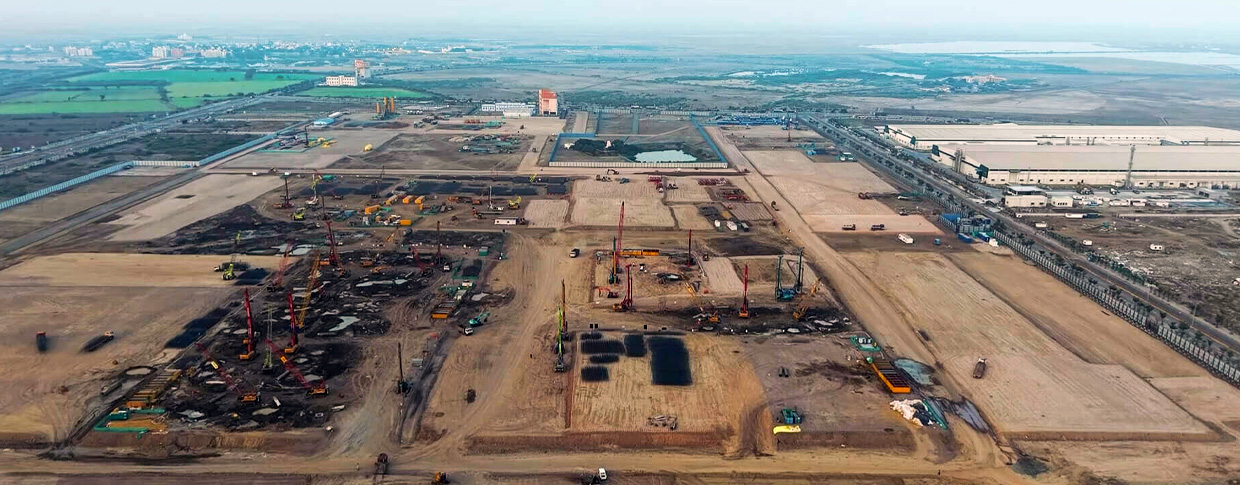
Emerging Markets: Expanding India’s Export Reach
Beyond traditional partners, India is exploring new markets in Latin America, Africa & Southeast Asia. These regions are becoming key consumers of engineering goods, agricultural products & generic medicines.
In recent years, India has also signed new trade agreements to gain preferential access to these markets. These bilateral and multilateral deals have opened opportunities for Indian exporters, allowing them to diversify beyond conventional routes and reduce over-reliance on Western economies.
This diversification is pivotal to achieving the goals of India’s foreign trade policy — establishing self-reliant, technology-driven & globally competitive export hubs.
What Challenges Do India’s Export Hubs Face Currently?
Experts highlight that India’s export hubs face several structural and operational challenges despite significant progress. These include infrastructure bottlenecks, high logistics costs, complex compliance under services tax & skill shortages in advanced manufacturing.
Additionally, fluctuating global demand, trade tensions & evolving global trade dynamics continue to test the resilience of Indian exporters. However, initiatives like Gati Shakti, simplified customs clearance & better port connectivity are gradually mitigating these issues.
According to export professionals, if India continues improving infrastructure and fostering innovation, hubs like Dholera, Tamil Nadu & Andhra Pradesh could become benchmarks for export-led development in Asia.
Digitalization and the Next Phase of India’s Export Revolution
The digital revolution is transforming India’s export growth hubs, enhancing transparency, speed & efficiency across supply chains. The Government of India, through the Ministry of Commerce, is advancing digital trade platforms that simplify customs, logistics & compliance. These systems enable exporters to manage documentation electronically, access real-time tracking & integrate seamlessly with global value chains.
Digitalization supports both services and merchandise exports, helping industries like engineering goods, pharmaceuticals & petroleum products reach new markets faster. As global trade becomes increasingly data-driven, digital readiness will determine how competitive India’s export growth hubs remain in the coming decade.
Sustainability and Green Trade Initiatives
Modern trade is shifting toward sustainable growth. India is embedding green practices within its export framework — from solar-powered logistics zones in Dholera to eco-friendly industrial clusters in Tamil Nadu. Hubs like the Dholera industrial hub lead this transformation through renewable energy zones, waste-to-power systems & efficient water recycling. These efforts align India with environmental expectations of key destinations such as the European Union.
Foreign direct investment is now flowing into clean-technology and circular-economy projects, signaling the rise of eco-conscious trade. With global buyers favoring sustainable sourcing, Bharat’s green shift strengthens its image as a responsible, future-ready exporter.
Innovation and Research as Export Catalysts
Innovation underpins India’s evolving trade strategy. Government programs promoting research, automation & AI-enabled manufacturing improve quality and reduce production cycles. Special Economic Zones (SEZs) and innovation parks within India’s export growth hubs foster a culture of invention, linking academia and industry to design high-demand products — from generic medicines to renewable-energy components. These hubs are becoming knowledge centers, advancing technology-driven exports and services excellence.
Trade Agreements and Global Partnerships
Bharat’s proactive trade diplomacy is unlocking new markets. Agreements with the European Union, United Kingdom & Latin America expand opportunities while helping balance trade deficits through high-value services exports. Harmonizing India’s standards with global norms makes the country an attractive sourcing and manufacturing base for multinational corporations.
A Vision for the Next Decade
With world-class infrastructure, digital systems & policy support, India is on track to become a global export hub. Expanding corridors like the Gujarat Industrial Corridor and new smart zones will generate jobs, foster innovation & diversify exports. As port modernization and AI-led production advance, India’s trade ecosystem moves closer to achieving sectoral surpluses — turning its export-led growth vision into an emerging reality.
Strengthening Export Infrastructure Through Modern Logistics
Infrastructure development remains key to expanding India’s export growth hubs. New multimodal logistics parks, improved road-rail-port connectivity & digital cargo systems are reducing high logistics costs. These upgrades enhance efficiency, allowing Indian exporters to compete better in global value chains and new markets.
Empowering MSMEs in India’s Export Ecosystem
Micro, small & medium enterprises (MSMEs) play a crucial role in driving India’s total exports. Through export promotion schemes, digital support & financial incentives, the Government of India is enabling MSMEs to access global trade opportunities, diversify export baskets & strengthen economic transformation nationwide.
Conclusion: The Road Ahead for India’s Export Growth Hubs
The story of India’s export growth hubs is one of ambition, innovation & global collaboration. Regions like Dholera, Tamil Nadu & Andhra Pradesh symbolize how integrated planning, technology & policy reforms can turn potential into prosperity.
By investing in infrastructure, promoting foreign direct investment & aligning trade with sustainability, India’s export landscape is evolving into a model for emerging economies worldwide.
As the world navigates shifting global trade dynamics, India’s ability to innovate, adapt & lead will define its role in shaping the future of international commerce. The synergy between policy, performance & progress ensures that the nation’s export hubs continue driving its economic transformation — solidifying India’s position as one of the world’s most promising export powerhouses.

